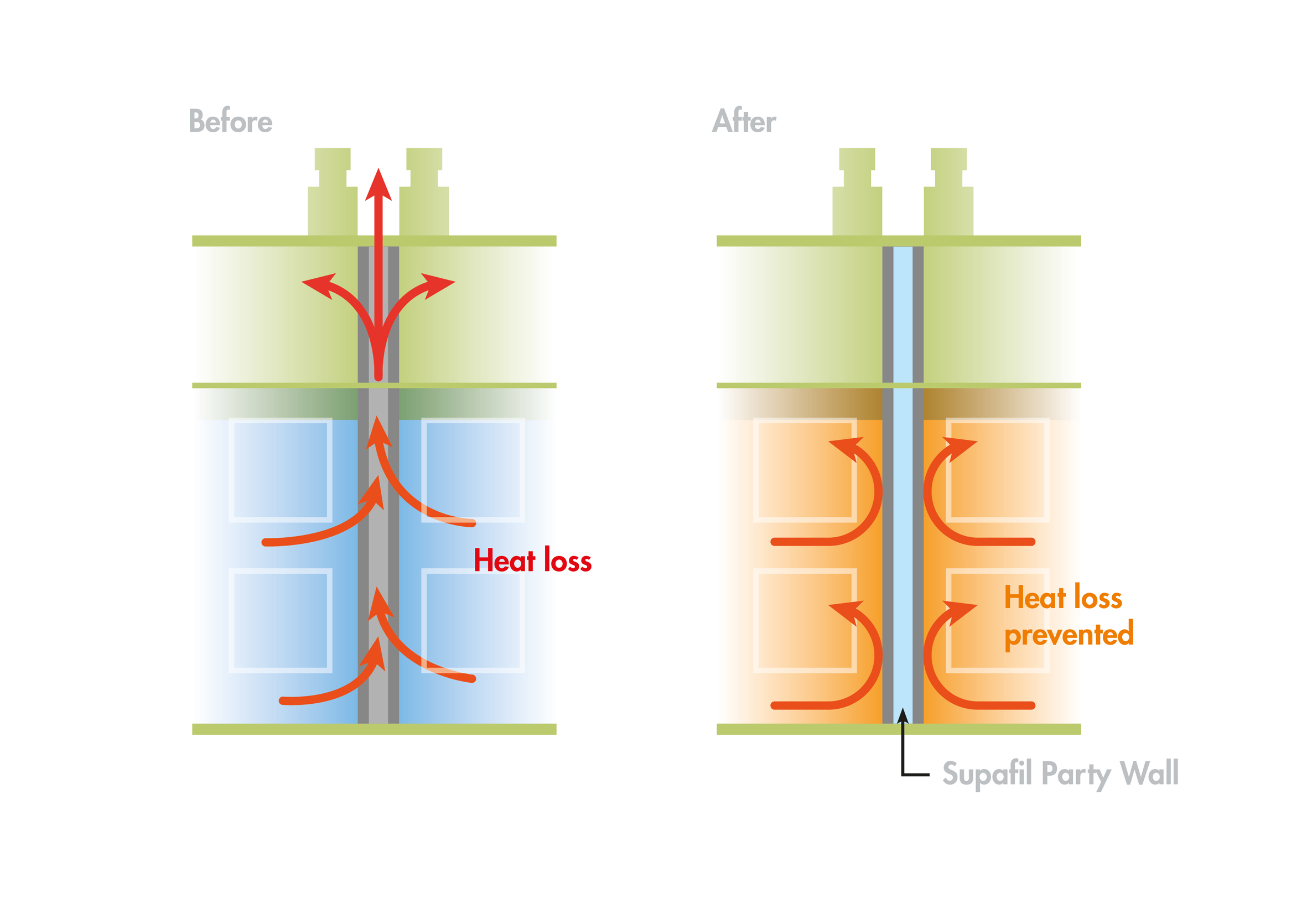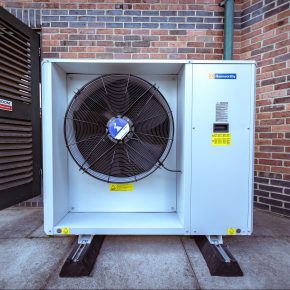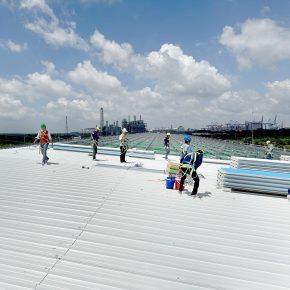
How new RdSAP helps tackle uninsulated party wall cavities
Tackling heat lost through uninsulated party wall cavities in existing homes
Knauf Insulation welcomes new RdSAP (version 9.92) which follows new research headed by Leeds Beckett University (formerly Leeds Metropolitan University), MIMA (the Mineral Wool Insulation Manufacturers’ Trade Association) and Knauf Insulation.
New research findings include:
- significant amount of heat is lost through uninsulated cavity party walls
- in modern houses the heat loss into the party cavity walls could be as much as that from all other elements combined
Party wall thermal bypass
Knauf Insulation on the role of party wall insulation in preventing heat loss
In external walls, heat is mainly lost due to conduction through the wall, as the heat passes through the various material layers. In party walls, heat loss occurs through a phenomenon known as party wall thermal bypass.
Party wall thermal bypass
- occurs where cold air enters the uninsulated cavity at exposed edges
- cavity creates a chimney effect and the cold air rises as it is warmed by heat conducted through the leaves of the party wall from the adjoining homes, before into the loft space or through the roof
Semi detached and terraced houses built in the last 65 years have generally been constructed with a cavity party wall and it was only in 2010 that the building regulations recognised the effect in new build dwellings. So all houses with party cavity walls built to earlier regulations are likely to require remedial treatment to eliminate the heat loss.
Over 7 million homes in the UK lose heat through untreated cavity party walls
The research that helped to identify the problem also demonstrated that party wall thermal bypass could be prevented by fully filling the empty party wall cavity with mineral wool, providing a significant opportunity to improve the energy efficiency of buildings at relatively low cost.
Over 5 million of the untreated party wall cavities have a full cavity from ground level all the way to the underside of the roof thus increasing the amount of heat lost compared to the remaining party cavity walls, which have a solid section to the underside of the roof.
What are the savings if all of the full party wall cavities were treated?
- approximately £465 million per year
- 2.5 million tonnes of CO2 [1]
That is equivalent to:
- carbon generated by one person taking 2.5 million return flights to New York
- or driving 5 billion miles in a four wheel drive car
- or travelling 27.5 billion miles on national rail [2]
Stephen Wise, Technical Development Manager at Knauf Insulation:
The inclusion within RdSAP 9.92 is great news, as it shows that the problem of party wall thermal bypass is being taken seriously, but it does mean there is some work to be done now to improve understanding of the issue within the industry.
As it is a relatively low cost measure with a short payback period this will also mean that party wall insulation will be able to attract funding under the current Energy Company Obligation, and is classed as a primary measure under the scheme. The industry now needs to ensure that assessors are properly trained to identify heat loss cavities and that installers are trained and equipped to install the treatment required.
Since 2005, we have been working with a number of organisations, including Leeds Beckett University who are experts in building physics, to understand the mechanisms of party wall bypass and develop solutions to adequately eliminate it. Through this research we have learned a great deal including how to identify if a party wall has a cavity and whether it is suitable for insulating.
We have also found how to overcome non-standard homes where installation will differ to standard external cavity wall insulation methods. Most importantly however, we have gathered solid evidence that our Supafil Party Wall solution, specifically developed to insulate party cavity walls, provides a reliable means of eliminating party wall bypass without compromising the acoustic performance of the wall something that is highly important if this is to see uptake on a large scale to help reduce energy bills throughout the country.
We are now looking to share our knowledge with relevant parties such as energy assessors, housing associations, insulation installers and others – all to ensure the industry is ready to deliver the energy saving measures as required.
LINK TO MORE INFORMATION ON PARTY WALL INSULATION
.
[1] Building Research Establishment (BRE)
[2] Aviation Environment Foundation
Latest news

16th April 2024
Mitsubishi Electric set to host CIBSE Journal webinar
Mitsubishi Electric will host a CIBSE Journal webinar on Wednesday 24th April 2024 at 1pm to discuss the legislation and initiatives driving changes in the way we will need to heat, cool and ventilate large commercial buildings to reach net zero emissions in the UK.
Posted in Air Conditioning, Articles, Building Industry Events, Building Industry News, Building Products & Structures, Building Regulations & Accreditations, Building Services, Facility Management & Building Services, Heating Systems, Controls and Management, Heating, Ventilation and Air Conditioning - HVAC, Information Technology, Pipes & Fittings, Plumbing, Seminars, Sustainability & Energy Efficiency, Training
16th April 2024
Hamworthy: What to consider when choosing a heat pump?
At the heart of an efficient heat pump system lies an important element: the refrigerant – Jason Allen, Commercial Product Manager, Groupe Atlantic UK, ROI & NA. Hamworthy Heating is a Groupe Atlantic brand.
Posted in Articles, Building Industry News, Building Products & Structures, Building Services, Facility Management & Building Services, Heating Systems, Controls and Management, Heating, Ventilation and Air Conditioning - HVAC, Pipes & Fittings, Plumbing, Retrofit & Renovation, Sustainability & Energy Efficiency
15th April 2024
EJOT Colorfast chosen for Kingspan’s highly sustainable new Asian factory
More than 120,000 EJOT Colorfast self-drilling fasteners have helped Kingspan to create a thermally superior, visually-appealing building envelope for its first purpose-built manufacturing plant in South East Asia.
Posted in Articles, Building Industry News, Building Products & Structures, Building Systems, Case Studies, Posts, Restoration & Refurbishment, Retrofit & Renovation, Roofs, Sustainability & Energy Efficiency
15th April 2024
ASSA ABLOY helps new manufacturing plant achieve LEED Gold certification
Improving sustainability performance is becoming a higher priority for building developers, owners and users. One consequence is fast-growing demand for green building certifications — and therefore specification. Specialist input can make the difference between hitting and missing a project target, as ASSA ABLOY explains here…
Posted in Access Control & Door Entry Systems, Architectural Ironmongery, Articles, BIM, Infrastructure & CAD Software, Building Industry News, Building Products & Structures, Building Regulations & Accreditations, Building Services, Case Studies, Doors, Facility Management & Building Services, Information Technology, Retrofit & Renovation, Security and Fire Protection, Sustainability & Energy Efficiency
 Sign up:
Sign up: